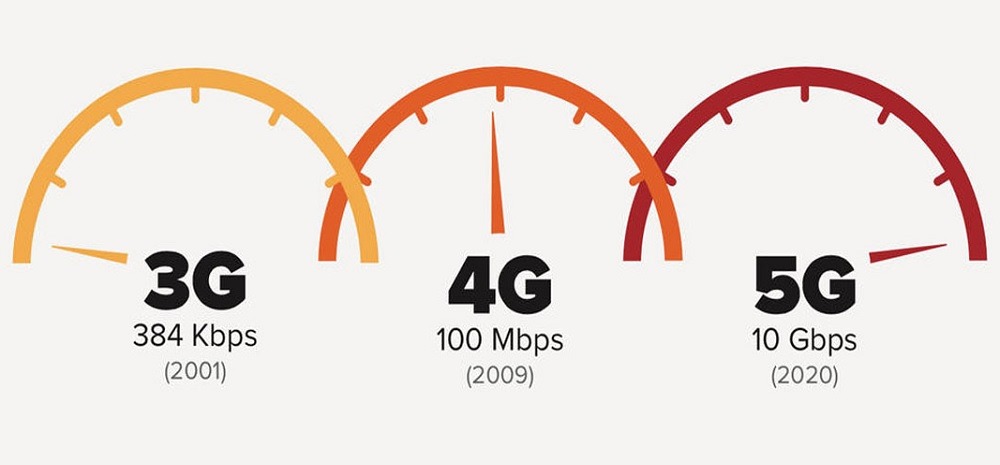3G Vs. 4G Vs. 5G: Mobile Data Speeds Comparison [2017]
Data speeds are getting faster & more evolved with each successive generation.

Back when mobile phones were introduced in India, there was no differentiation between the mobile networks. With the evolutionary advancements in telecom technology, it became necessary to differentiate the newer advanced networks from the older one.
Telecom companies looking to sell connections often hyped up even minor advancements as earth-shattering. It mostly worked. People always crave the best and latest. For some, it is a matter of bragging rights and for others, it is the need to have the best and the latest in technology. In both cases, the cost don’t matter.
What Does 3G Or 4G Even Mean?
The ‘G’ stands for ‘Generation. So, 3G means 3rd Generation Network and 4G is the 4th Generation. 3G network revolutionized the entire mobile phones scene. It changed how we use our phones and gave birth to the first ‘Smartphone’. It laid the foundation of modern e-commerce and m-commerce as we know it today.
At a basic level, the difference between 3G and 4G is pretty simple and obvious. The speeds you get on 4G network will be faster than 3G networks.
For a network to be classified as 3G, it needs to meet certain preset technical standards for reliability and speed. At the beginning, around 2003, the networks were required to have speeds of at least 200 kilobits per second. It gave rise to demand for even faster data speeds. It also pushed mobile internet based services. The 3G speeds of today are much faster than the initial 200 kbps.
The next step in evolution of 3G was 4G. The minimum peak speed requirement for qualifying 4G networks ranged between 100 megabits per second and 1 Gigabit per second. Among the many flavours of 4G, LTE is among the most widely implemented version of 4G worldwide. This is what we currently have in India.
Telcos Are Already Looking at 5G Rollout!
There are already talks of the next-gen 5G networks, around the world. And this time, India is not very far behind. Airtel has just deployed Massive Multiple-Input Multiple-Output (MIMO) in Kolkata and Bengaluru, which has been claimed as India’s first 5G capable network.
Airtel has dubbed this as “pre-5G technology”, which will help Airtel users have access to better coverage inside buildings and underground locations.
The Indian Government wants the entire nation to be equipped and powered with 5G network, by 2020. To show its commitment, it has already appointed a high-level committee of Ministers from telecom, information and technology to oversee the deployment of 5G, in the next 3 years across India.
All these technicalities and definitions aside, we all want to know how data speeds compare across these 3 generations of networks.
3G Vs. 4G Vs. 5G: Data Speeds Compared
| 3G | 4G | |
| Data Transfer Rate | 3.1 MB/Sec | 100 MB/Sec |
| Internet Services | Broadband | Ultra Broadband |
| Bandwidth | 5 – 20 MHz. | 100 MHz. |
| Frequency | 1.6 – 2 GHz. | 2 – 8 GHz. |
| Data Speeds | 5.8 Mbps | 14 Mbps |
As you can see in the data above, we have not included the data for 5G. The primary reason for that is, 5G standards are still being finalized. Testing being done around the world has thrown up varying results.
According to the Groupe Speciale Mobile Association (GSMA), in order to qualify as a 5G network, it should meet most of the following eight criteria;
- 1 to 10Gbps connections
- 1 millisecond end-to-end round trip delay
- 1000x bandwidth per unit area
- 10 to 100x number of connected devices
- (Perception of) 99.999 percent availability
- (Perception of) 100 percent coverage
- 90% reduction in network energy usage
- Up to ten-year battery life for low power, machine-type devices
The 3G network was a big breakthrough in communication, carrying significantly faster data along with phone calls and text messages.
4G essentially works the same way as 3G, but with faster internet connection and lower latency.
The next generation of communication network is going to be even faster. The hectic speed of evolution is going to render each successive generation of smartphones obsolete, faster than ever before.
All we can do is be ready to take the future head-on. After all, change is the only constant.
